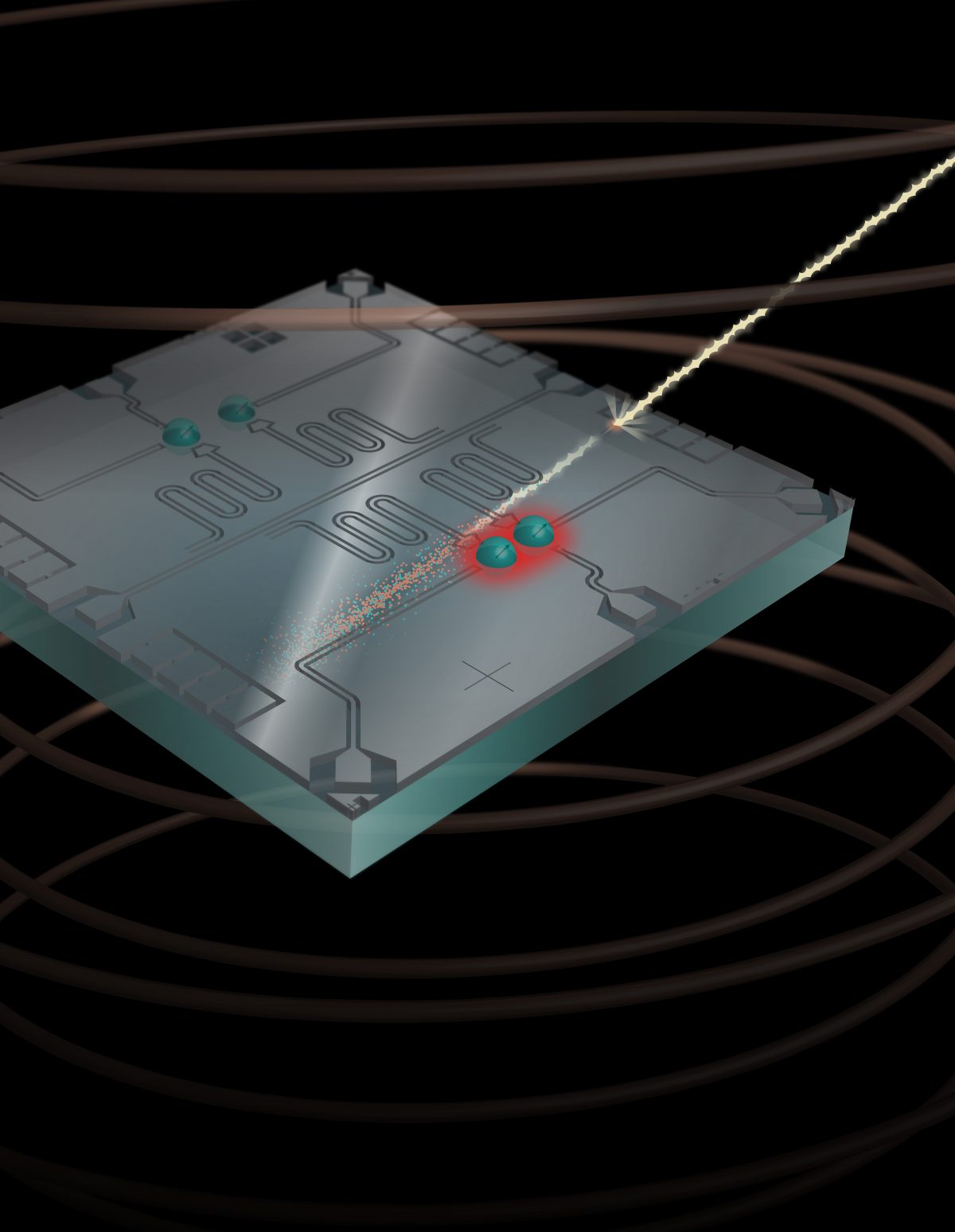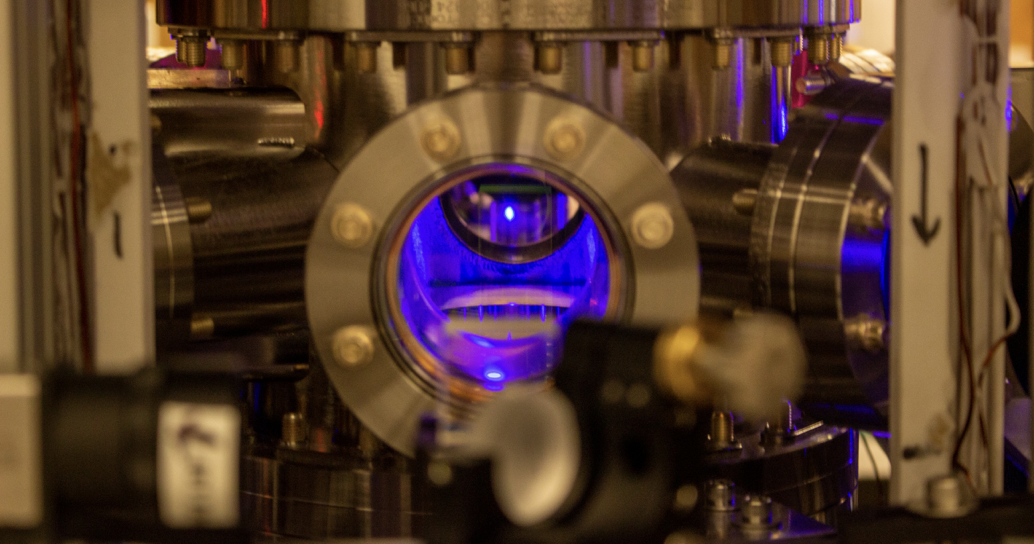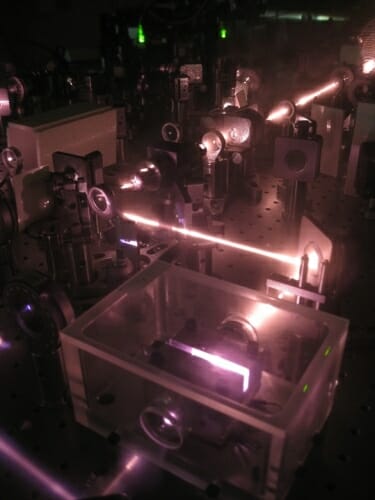As a member of CQE, WQI has now better-than-public access to the IBM Q systems (up to Guadelupe, 16 qubit system).
To find out more about how to sign up for this capability please contact Katerina Moloni.
As a member of CQE, WQI has now better-than-public access to the IBM Q systems (up to Guadelupe, 16 qubit system).
To find out more about how to sign up for this capability please contact Katerina Moloni.
In the modern, cutting-edge field of quantum computing, it can be a bit puzzling to hear a researcher relate their work to low-tech slide rules. Yet that is exactly the analogy that Roman Kuzmin uses …
Read the full article at: https://www.physics.wisc.edu/2022/12/27/welcome-roman-kuzmin-the-dunson-cheng-assistant-professor-of-physics/Like the classical computers we use every day, quantum computers can make mistakes when manipulating and storing the quantum bits (qubits) used to perform quantum algorithms. Theoretically, a quantum error correction protocol can correct these …
Read the full article at: https://www.physics.wisc.edu/2022/09/12/nsf-quantum-center-collaboration-finds-path-to-fault-tolerance-in-neutral-atom-qubits/A university-industry collaboration has successfully run a quantum algorithm on a type of quantum computer known as a cold atom quantum computer for the first time. The achievement by the team of scientists from the University of Wisconsin–Madison, ColdQuanta and Riverlane brings quantum computing one step closer to being used in real-world applications.
The work out of Mark Saffman’s group was published in Nature on April 20.
Read the press release tipsheet
WQI director Mark Saffman will be giving a talk to the UW retirement association Tuesday, January 4 on quantum computing. He will discuss what a quantum computer is and what sorts of problems it can solve, and share some of the research going on at WQI and how the results of that research are likely to affect the world in which we live.
As a token of their appreciation the retirement association will be making a donation to a Madison area food bank.
Small but mighty, semiconducting qubits are a promising area of research on the road to a fully functional quantum computer. Less than one square micron, thousands of these qubits could fit into the space taken …
Read the full article at: https://www.physics.wisc.edu/2021/09/09/new-3d-integrated-semiconductor-qubit-saves-space-without-sacrificing-performance/
Quantum computers could outperform classical computers at many tasks, but only if the errors that are an inevitable part of computational tasks are isolated rather than widespread events.
Now, researchers at the University of Wisconsin–Madison have found evidence that errors are correlated across an entire superconducting quantum computing chip — highlighting a problem that must be acknowledged and addressed in the quest for fault-tolerant quantum computers.
The researchers report their findings in a study published June 16 in the journal Nature, Importantly, their work also points to mitigation strategies.
“I think people have been approaching the problem of error correction in an overly optimistic way, blindly making the assumption that errors are not correlated,” says UW–Madison physics Professor Robert McDermott, member of the Wisconsin Quantum Institute and senior author of the study. “Our experiments show absolutely that errors are correlated, but as we identify problems and develop a deep physical understanding, we’re going to find ways to work around them.”
Read the full story at https://news.wisc.edu/correlated-errors-in-quantum-computers-emphasize-need-for-design-changes/

Optical atomic clocks are already the gold standard for precision timekeeping, keeping time so accurately that they would only lose one second every 14 billion years. Still, they could be made to be even more precise if they could be pushed past the current limits imposed on them by quantum mechanics.
With two new grants from the U.S. Army Research Office, an element of the U.S. Army Combat Capabilities Development Command’s Army Research Laboratory, UW–Madison physics professor Shimon Kolkowitz proposes to introduce quantum entanglement — where atoms interact with each other even when physically distant — to optical atomic clocks. The improved clocks would allow researchers to ask questions about fundamental physics, and they have applications in improving quantum computing and GPS.
Three UW–Madison physics professors and their colleagues have been awarded a U.S. Department of Energy (DOE) High Energy Physics Quantum Information Science award for an interdisciplinary collaboration between theoretical and experimental physicists and experts on quantum algorithms.
The grant, entitled “Detection of dark matter and neutrinos enhanced through quantum information,” will bring a total of $2.3 million directly to UW-Madison. Physics faculty include principal investigator Baha Balantekin as well as Mark Saffman, and Sue Coppersmith. Collaborators on the grant include Kim Palladino at the University of Oxford, Peter Love at Tufts University, and Calvin Johnson at San Diego State University.
With the funding, the researchers plan to use a quantum simulator to calculate the detector response to dark matter particles and neutrinos. The simulator to be used is an array of 121 neutral atom qubits currently being developed by Saffman’s group. Much of the research plan is to understand and mitigate the behavior of the neutral atom array so that high accuracy and precision calculations can be performed. The primary goal of this project is to apply lessons from the quantum information theory in high energy physics, while a secondary goal is to contribute to the development of quantum information theory itself.

A group of University of Wisconsin–Madison physicists has identified conditions under which relatively distant atoms communicate with each other in ways that had previously only been seen in atoms closer together — a development that could have applications to quantum computing.
The physicists’ findings, published Oct. 14 in the journal Physical Review A, open up new prospects for generating entangled atoms, the term given to atoms that share information at large distances, which are important for quantum communications and the development of quantum computers.
“Building a quantum computer is very tough, so one approach is that you build smaller modules that can talk to each other,” says Deniz Yavuz, a UW–Madison physics professor and senior author of the study. “This effect we’re seeing could be used to increase the communication between these modules.”
The scenario at hand depends on the interplay between light and the electrons that orbit atoms. An electron that has been hit with a photon of light can be excited to a higher energy state. But electrons loathe excess energy, so they quickly shed it by emitting a photon in a process known as decay. The photons atoms release have less energy than the ones that boosted the electron up — the same phenomenon that causes some chemicals to fluoresce, or some jellyfish to have a green-glowing ring.
“Now, the problem gets very interesting if you have more than one atom,” says Yavuz. “The presence of other atoms modifies the decay of each atom; they talk to each other.”